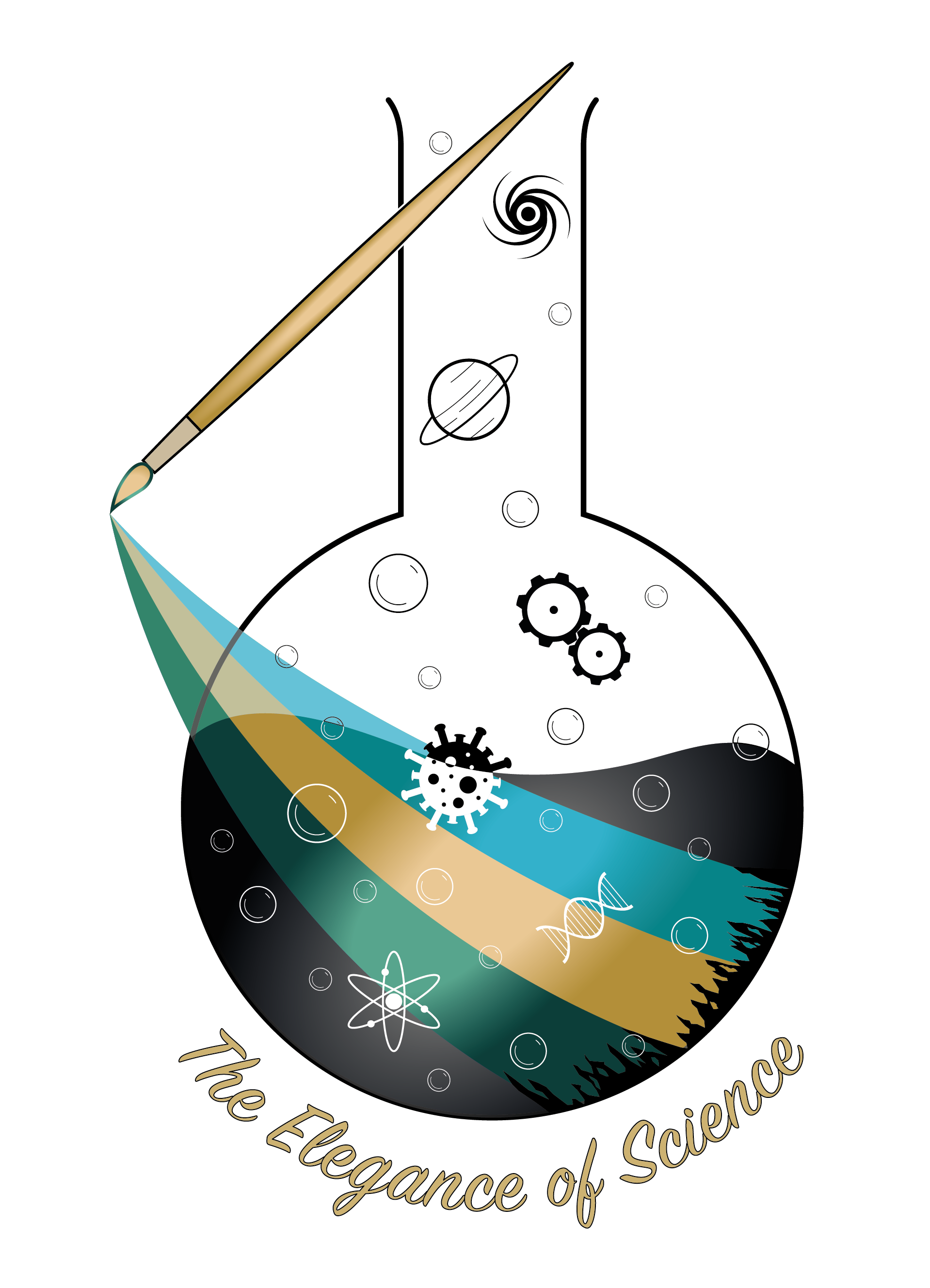One of my main activities is to produce artist's representation of various scientific phenomena in order to illustrate the work of scientists either for press releases or for conference talks. Those illustrations are created in close collaboration with the main author(s) in order to ensure the most physically plausible yet aesthetically pleasing illustration. Their are produced with very high resolution (typically > 50 Megapixels) in order to allow printing up to A0 without any quality loss. I am mostly doing digital painting using Adobe Photoshop, but can also include elements of 3D modelling and rendering.
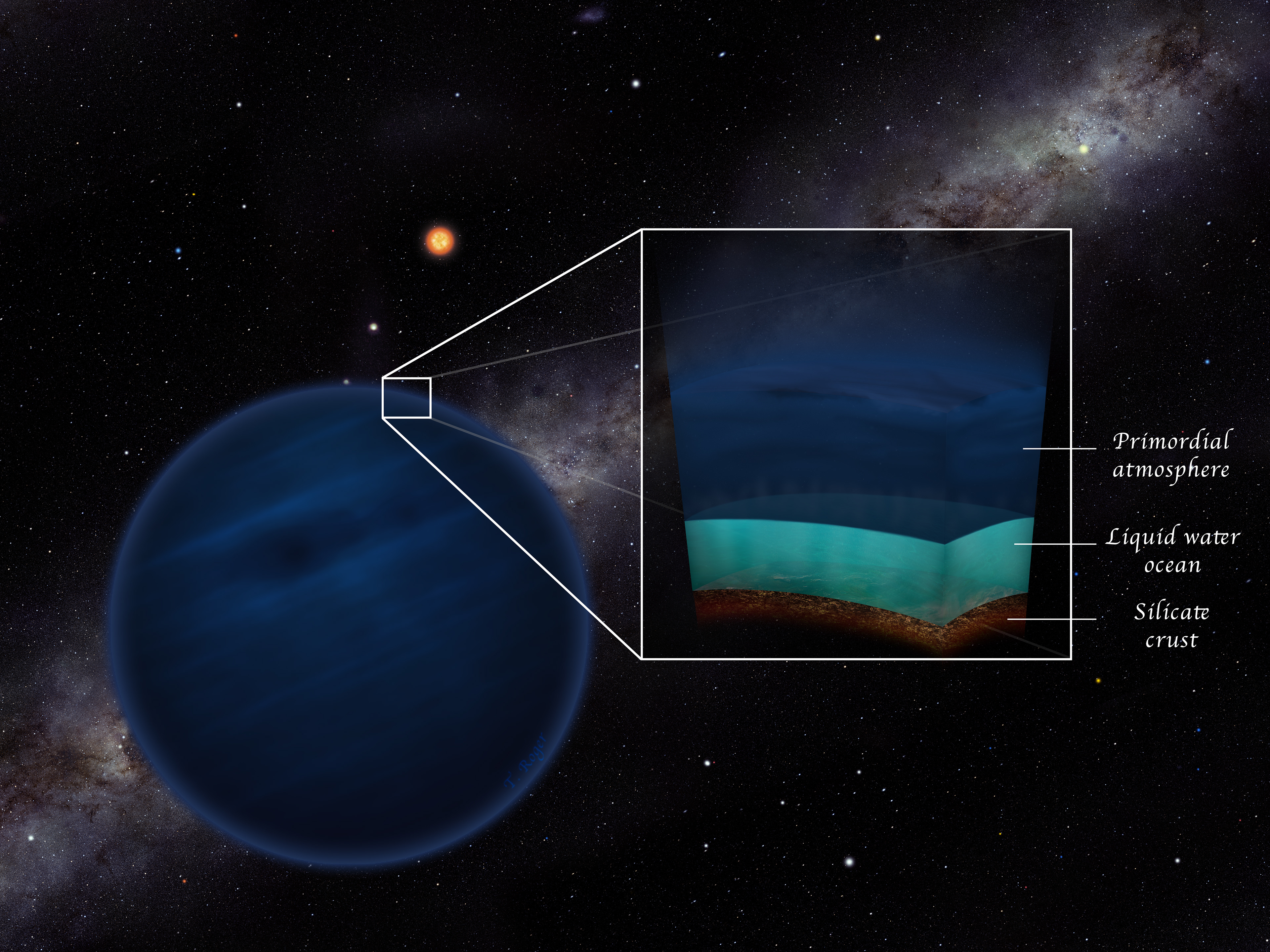
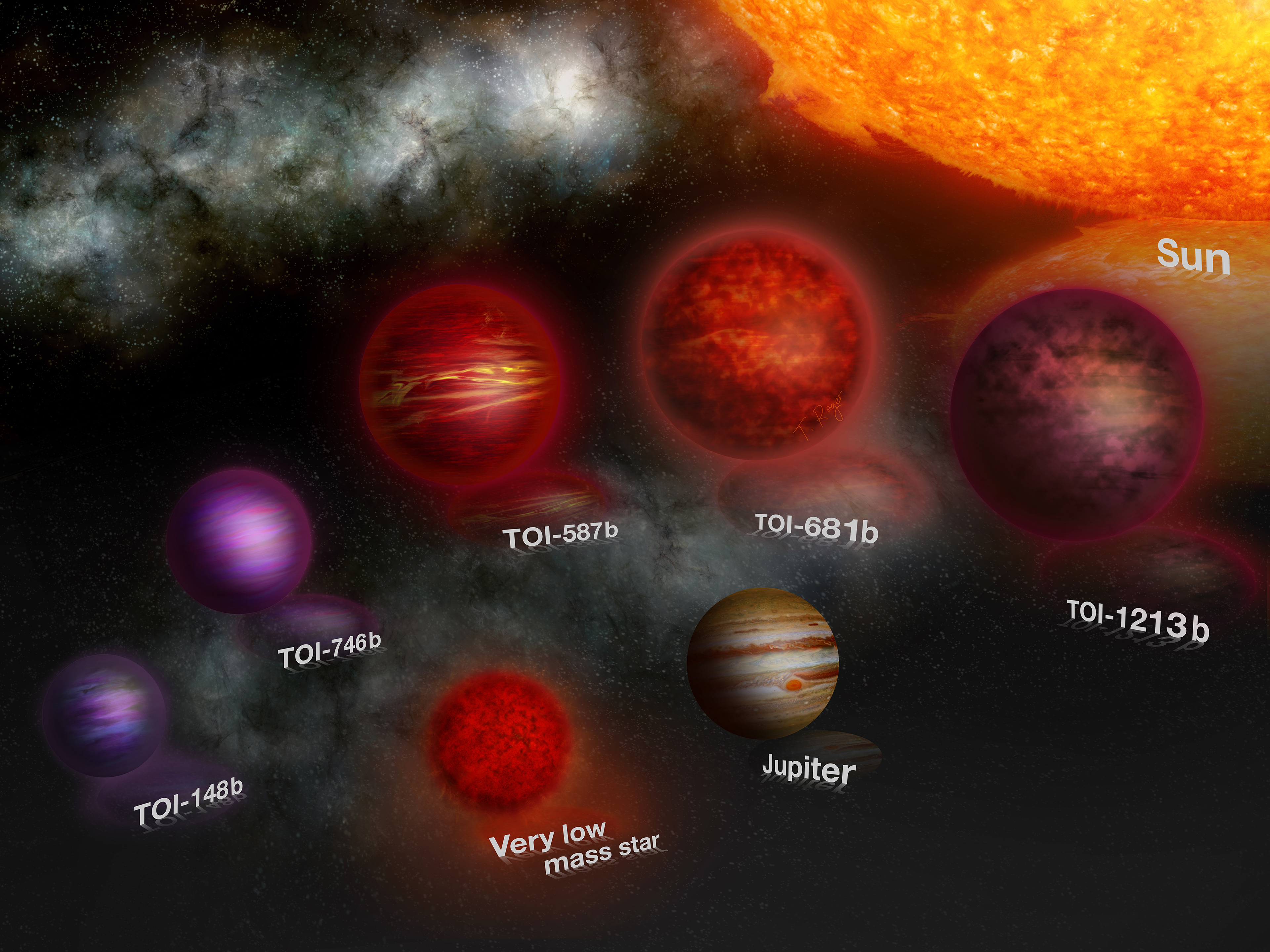
Left: Low-mass planets with a primordial atmosphere of hydrogen and helium might have liquid water and thus harbour exotic habitats despite being counter-intuitive. Produced with and without labels, in three languages: English, German and French. See the press release about Marit Mol Lous' research. © (CC BY-NC-SA 4.0) - Thibaut Roger - Universität Bern - Universität Zürich
Right: Five brown dwarfs (at scale to one another) discovered with the satellite TESS. Next to the Sun, Jupiter and a very low mass star for size and aspect comparison. See the press release about Nolan Grieves' research. © (CC BY-NC-SA 4.0) - Thibaut Roger - Université de Genève
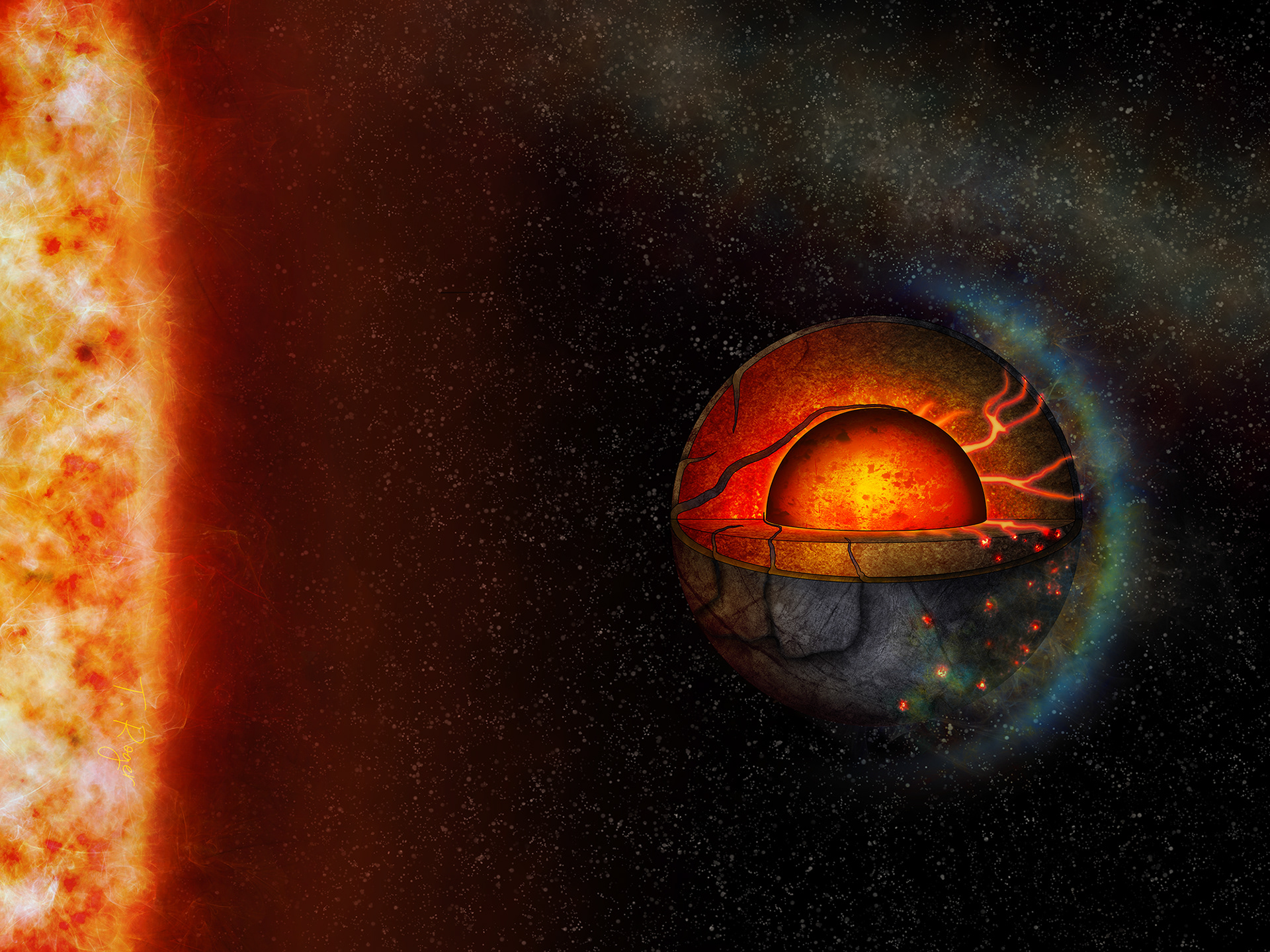
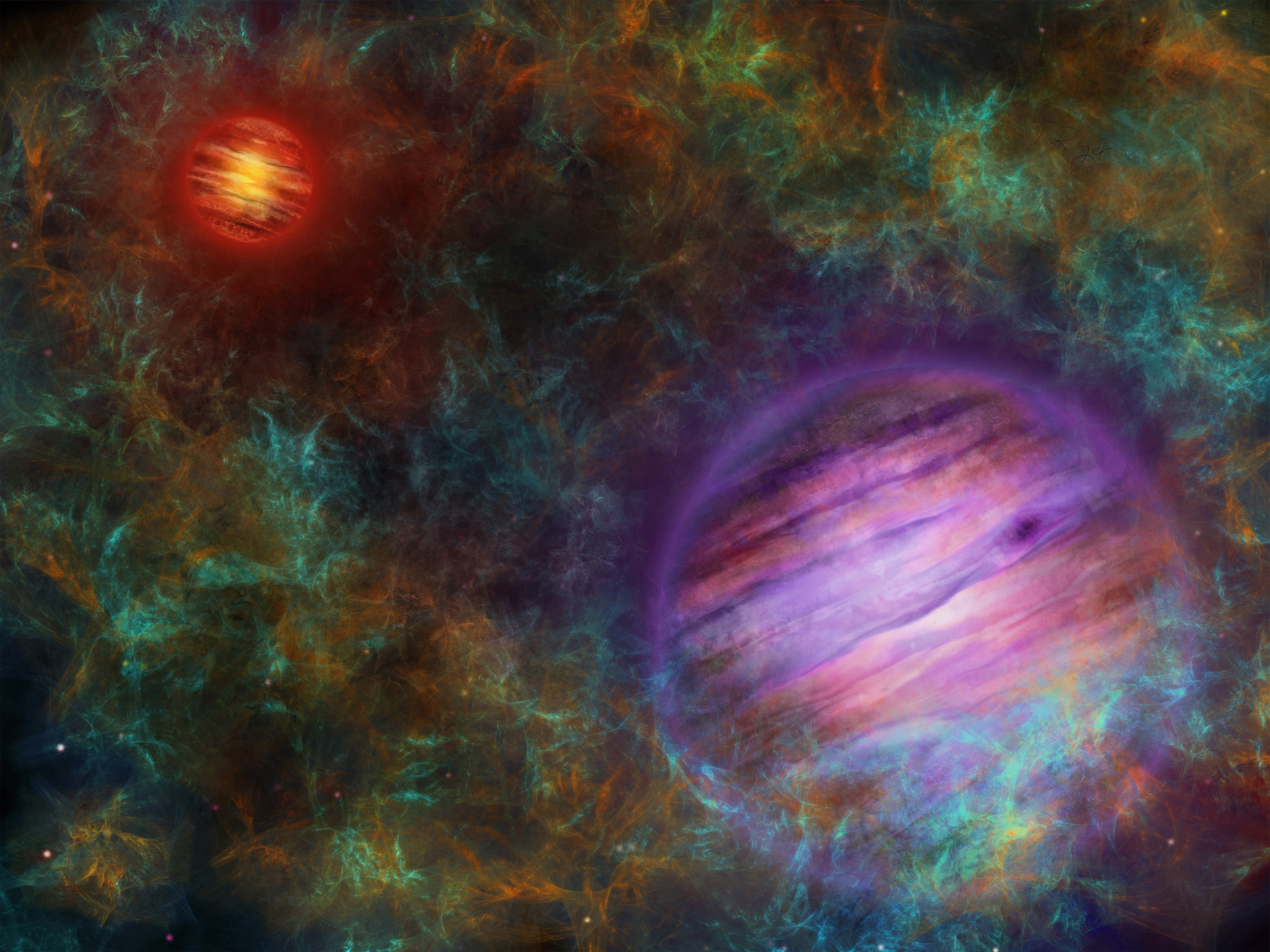
Left: A possible scenario for the interior and surface of the exoplanet LHS 3844b. The specific conditions lead to a hemispheric tectonic regime with volcanoes concentrating on the night side. See the press release about Tobias Meier's research. © (CC BY-NC-SA 4.0) - Thibaut Roger - Universität Bern
Right: The binary brown dwarfs system Oph 98. Very young, it is still embedded in a clouds of gas and dust. See the press release about Clémence Fontanive's research. © (CC BY-NC-SA 4.0) - Thibaut Roger - Universität Bern
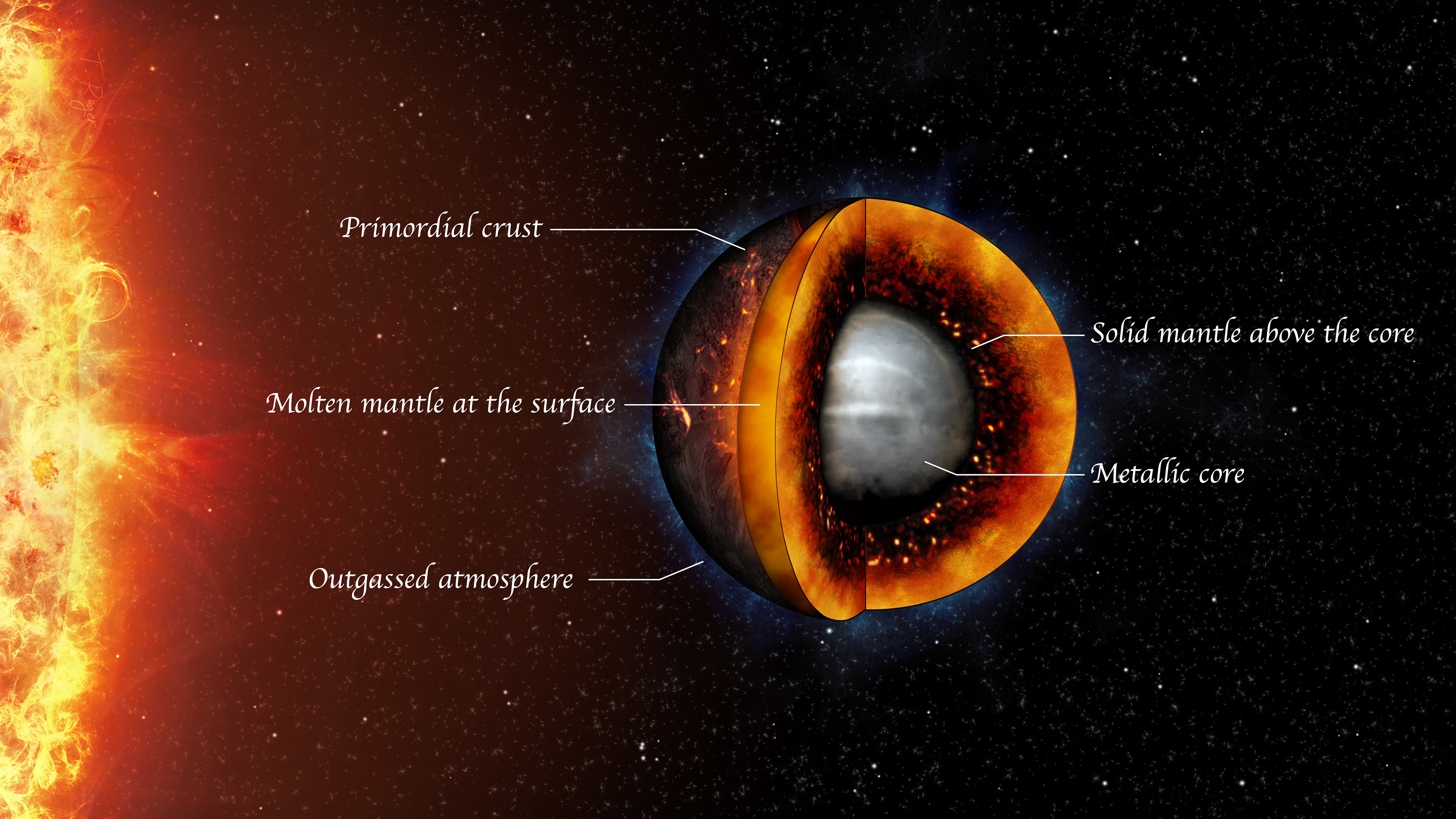
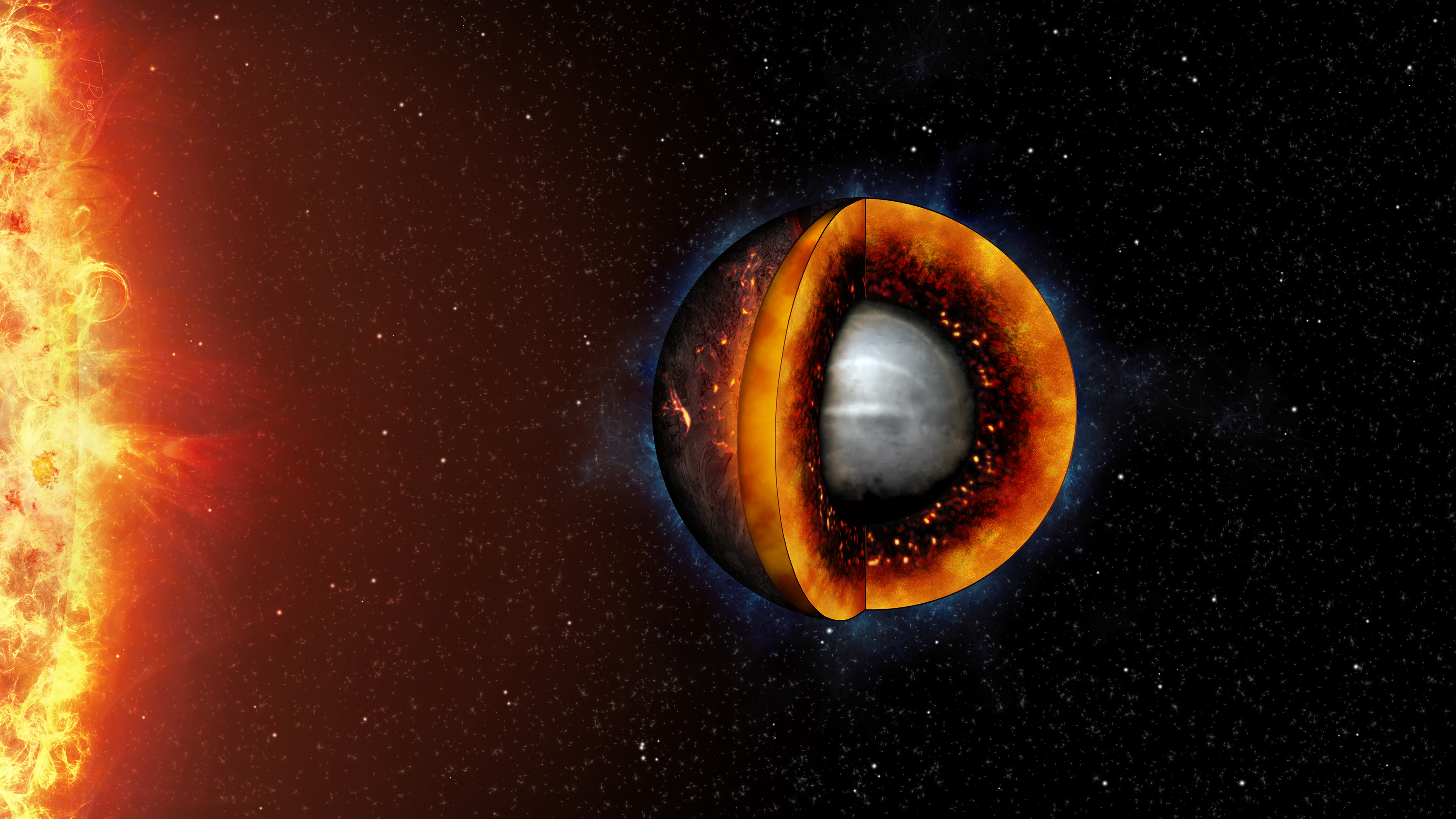
Representation of the interior of an Earth exoplanet fully molten. Their radius would be 5% bigger, making them easier to detect than their rocky counterpart. Produced with and without labels, in three languages: English, German and French. See the press release about Dan Bower's research. © (CC BY-NC-SA 4.0) - Thibaut Roger - Universität Bern
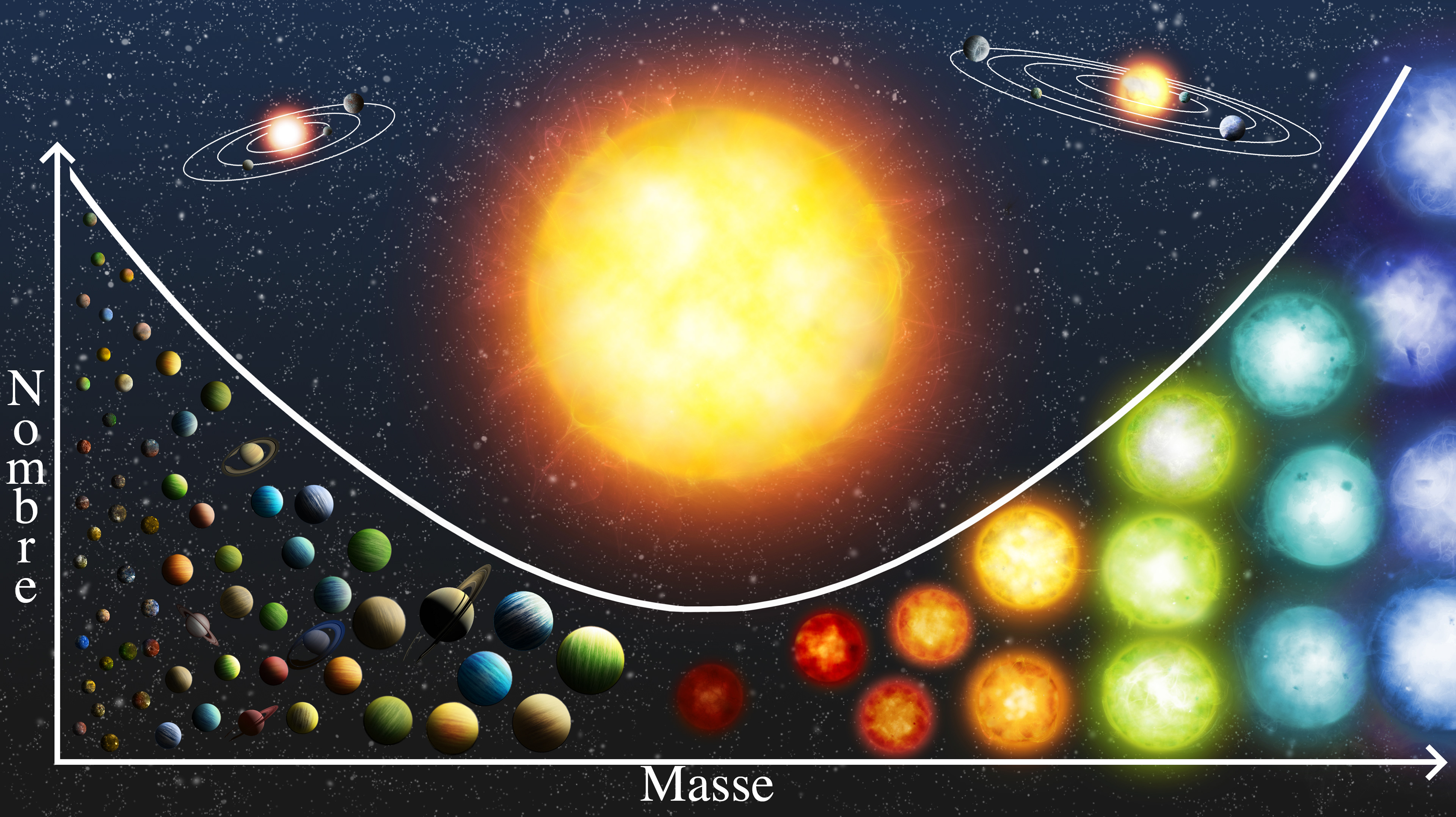
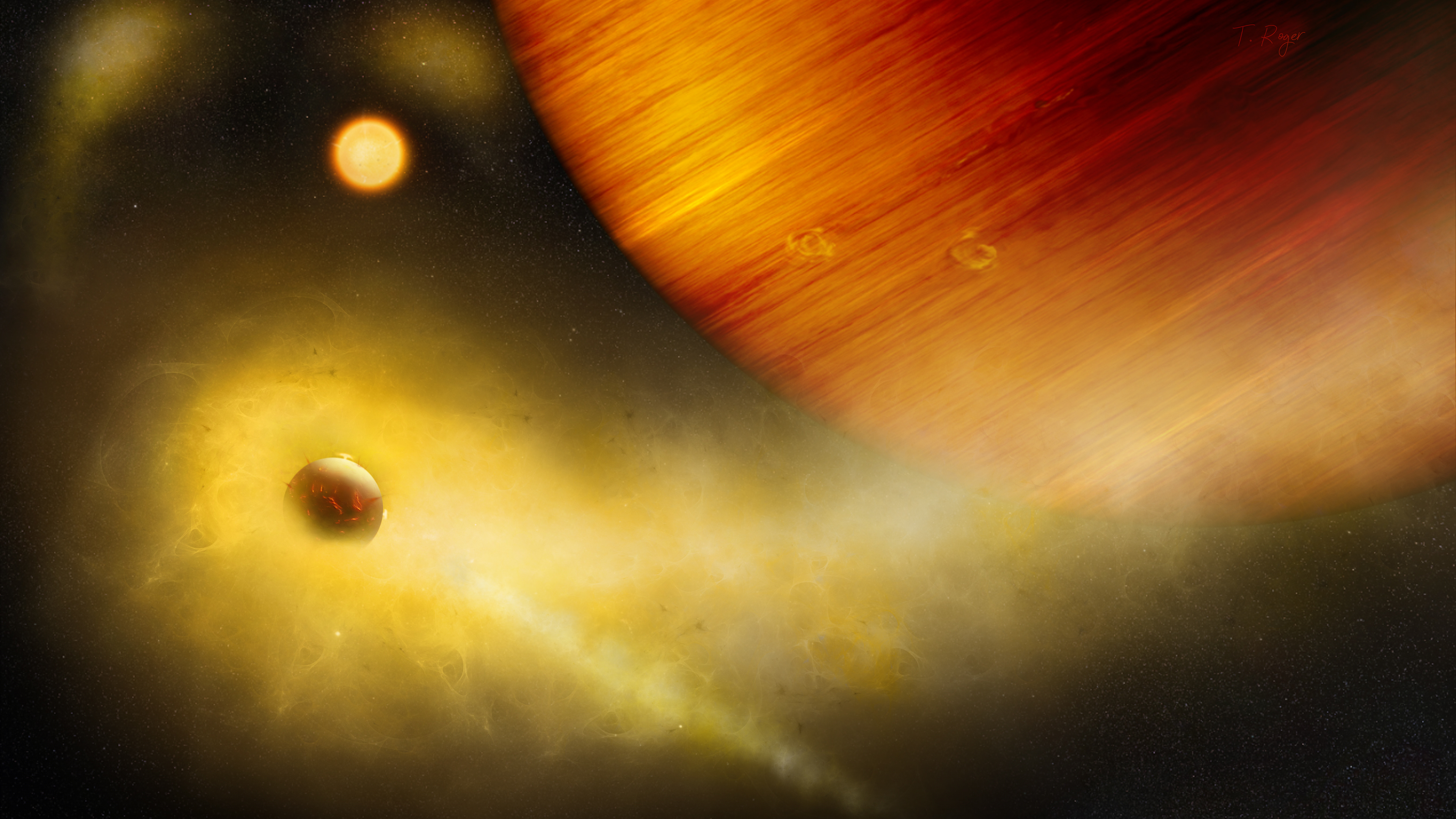
Left: Background slide for the contest My Thesis in 180 seconds for Manuela Raimbault. It represents the distribution of stellar companions: planets and stars, with the brown dwarfs desert in the middle. See the video of the presentation about Manuela Raimbault's research. © (CC BY-NC-SA 4.0) - Thibaut Roger
Right: The exoplanet WASP-49b might host an exomoon volcanically active. Similarly to Io, this potential exomoon would be emitting a lot of sodium and other gases as it orbit around the Jupiter-like planet. See the press release about Apurva Oza's research. © (CC BY-NC-SA 4.0) - Thibaut Roger - Universität Bern
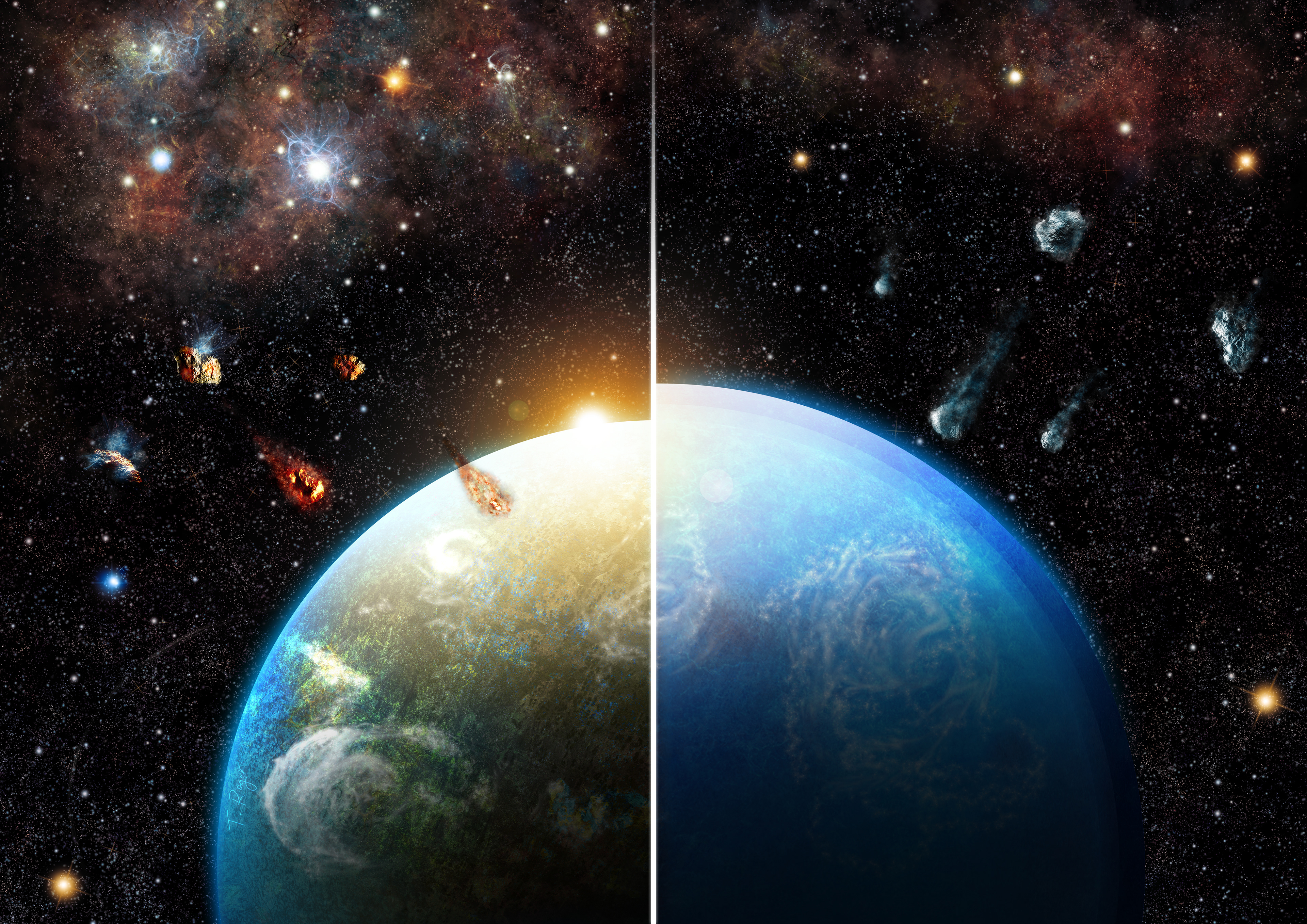
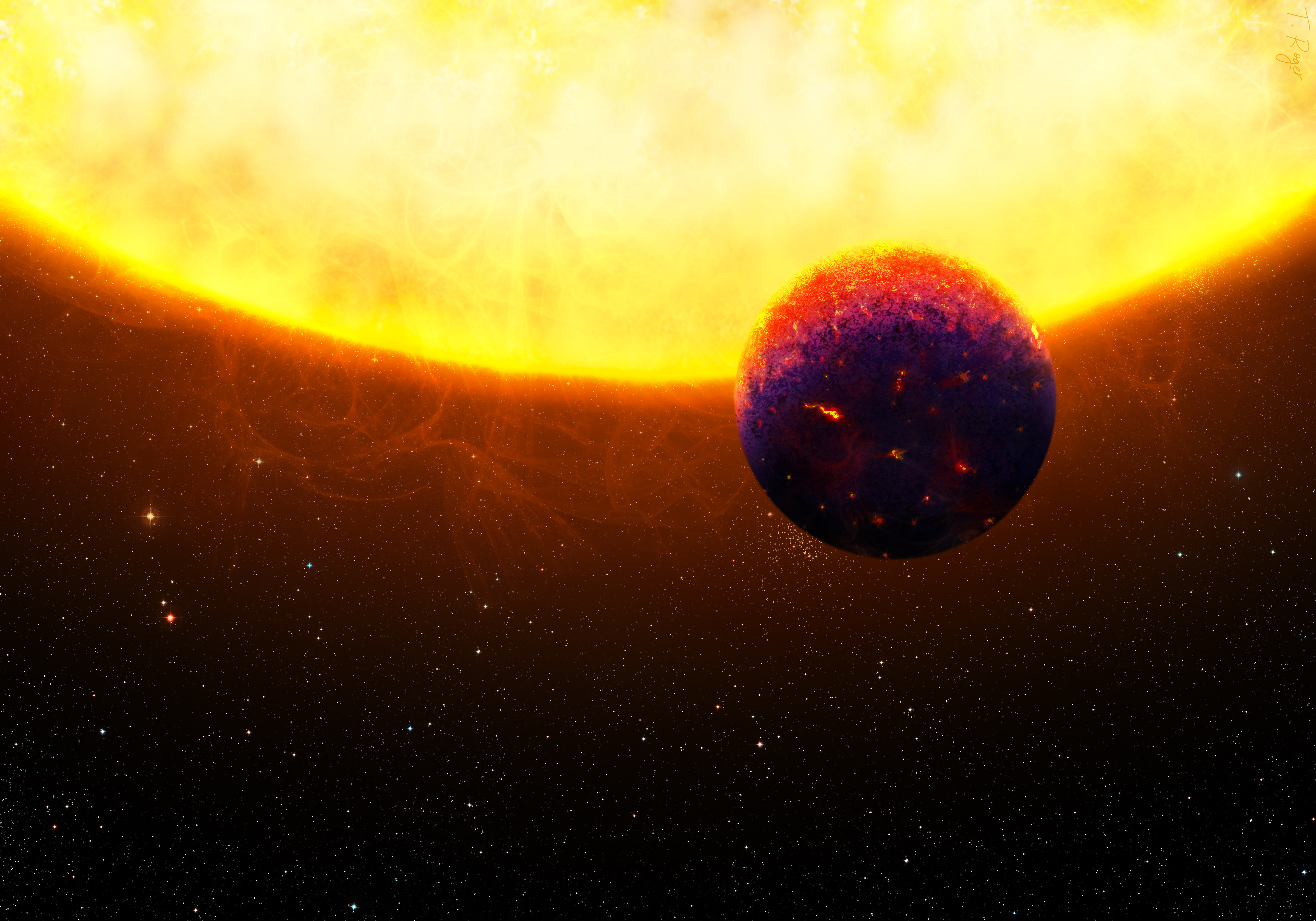
Left: The birth environment of a planet, with a lot of supernovae or not, might lead it to dry the comets of its system, resulting in a "dry" planet like the Earth, or one harbouring a massive ocean, leading to a difference in its final radius. See the press release about Tim Lichtenberg's research. © (CC BY-NC-SA 4.0) - Thibaut Roger - ETH Zürich
Right: The exoplanet 55 Cancri e orbits very close to its parent star, enabling to collect many measurements, including its density. Models suggests its density could be explained by the presence of many rubies and sapphires, hence the purple colour of this planet on the illustration. See the press release about Caroline Dorn's research. © (CC BY-NC-SA 4.0) - Thibaut Roger - Universität Bern
